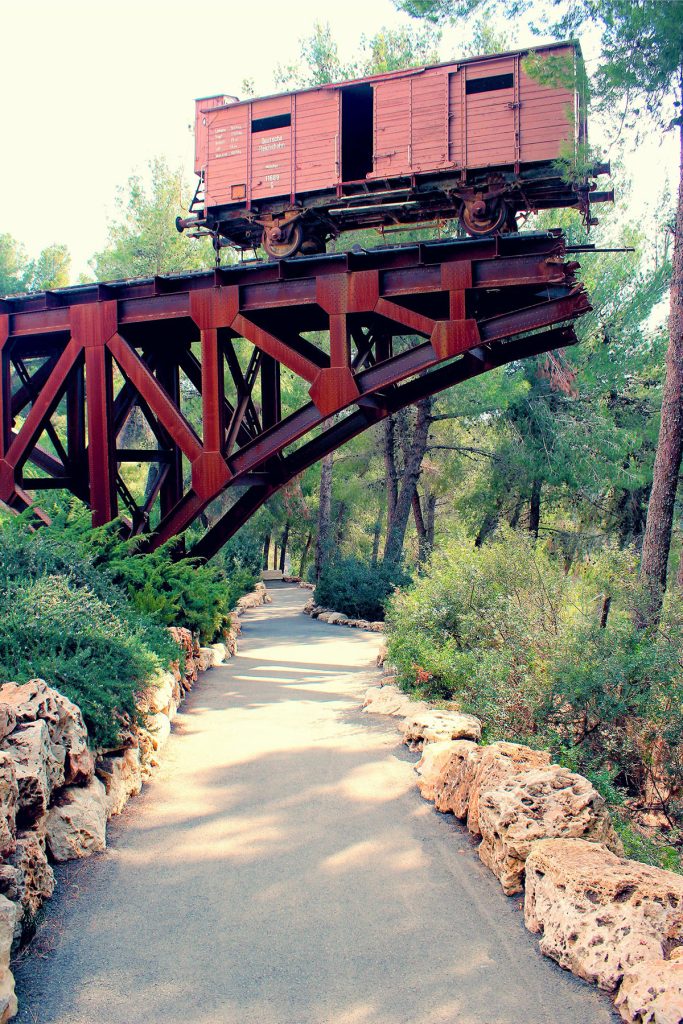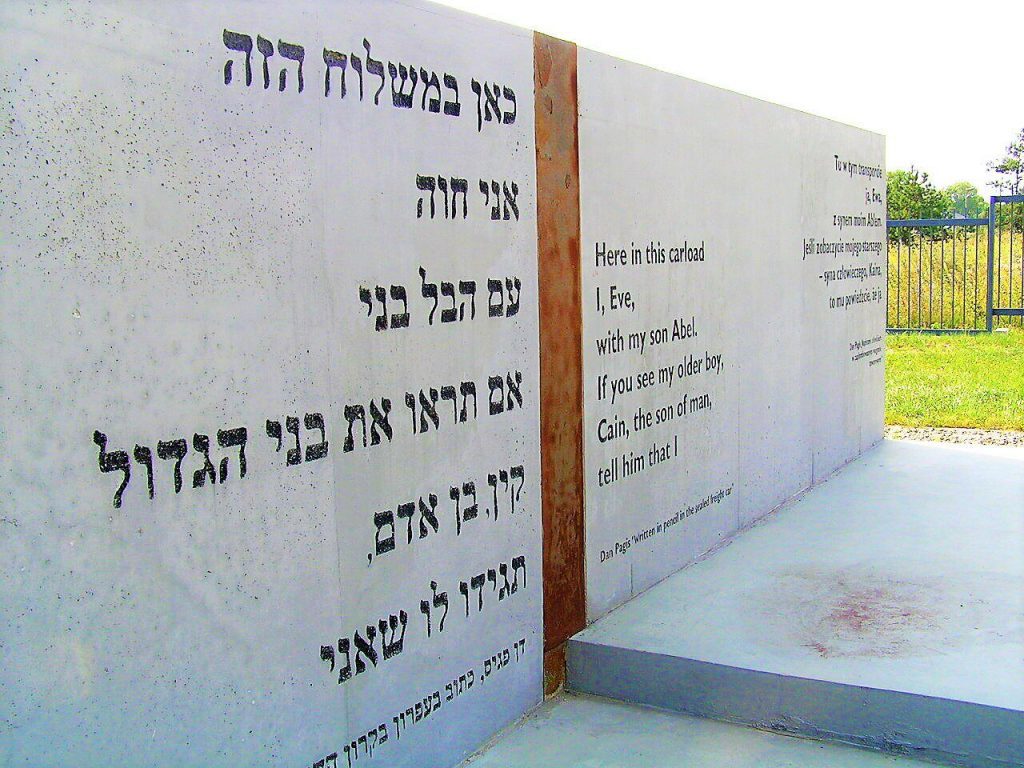The Memorial to the Deportees was established at Yad Vashem as a monument to the millions of Jews herded onto cattle cars and transported from all over Europe to the extermination camps. An original cattle car, appropriated by the German Railway authorities and given to Yad Vashem by the Polish authorities, stands at the center of the memorial site. Although symbolizing the journey towards annihilation and oblivion, facing as it does the hills of Jerusalem, the memorial also conveys the hope and the gift of life of the State of Israel and Jerusalem, eternal capital of the Jewish people.
More About the Memorial to the Deportees
The monument, designed by architect Moshe Safdie, was built in 1990. It was erected in memory of the Jews sent to the extermination camps. The monument consists of a railway carriage and a railway track standing on a broken bridge. On the monument is Dan Pagis’ poem.
The train car was originally used to transport cattle and during World War II the car was used to transport Jews to extermination camps. The cattle car has been maintained since the end of the war and was given to Yad Vashem by the Polish Railway Company when the president of Poland at the time, Lech Wałęsa was an official visit at Yad Vashem.
The location of the monument allows it to be viewed from a distance, and for passengers on the road that ascends to Jerusalem from the direction of Ein Kerem, the car seems to break out of the trees at the top of the mountain – which reinforces the meaning of the monument.
The Memorial to the Deportees – Dan Pagis Poem
The poem refers to the deportation of Jews from their place of residence to concentration and extermination camps during the Holocaust. The song uses a metaphorical allusion to the myth of the first murder according to the Bible. In addition, it mentions the characters of Eve, Abel, Cain, and Adam for the purpose of illuminating a later situation – shedding a mythical light on the implied, Holocaust situation. Pagis, as he did in most of his poems dealing with the Holocaust, does not explicitly mention it, and the way in which the subject is discussed is very restrained. The short song, which at first glance seems simple, is in fact a rather complex work.
The poem is supposedly a quote from a fragmentary inscription written in the carriage of a death train and which was addressed to the relatives of the victims; The address is as if a last and desperate attempt to convey knowledge, to create human communication, within the nightmarish experience of a death train car. Pagis himself said that his first poem about the Holocaust, the song “Dachau”, was “based on writing, sketching [scribbles] of the passengers in the death wagons in Auschwitz on the sides of the wagons to inform their relatives and friends that they were alive.”
The Memorial to the Deportees – A Hell Ride Experience
The deportees have expected a hellish experience during their ride on those carts. The journey to the extermination camps could have lasted up to 9 days if they were transported from the Western Parts of Europe: From countries like France or Holland. The conditions in the wagon were horrible about a hundred Jews were crammed together like sardines which in normal conditions 8-12 pieces of cattle were allowed in. But since the Nazis did not see the Jews as human but as sub-humans so it did not matter to them. Inside there were two barrels meant for urine and defecation. When visiting the monument you will see below the car an inscription the describes with the words of a survivor the horrific experience.




